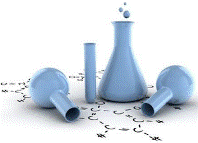Chemical and Biomolecular Engineering, Department of
Date of this Version
2011
Document Type
Article
Citation
J Thromb Haemost. 2011 November ; 9(11): 2235–2242.
Abstract
Background—Current manufacturing methods for recombinant human Factor VIII (rFVIII) within mammalian cell cultures are inefficient which limit the abundance needed for affordable, worldwide treatment of hemophilia A. However, rFVIII has been expressed at very high levels by the transgenic mammary gland of mice, rabbits, sheep and pigs. Unfortunately, it is secreted into milk with low specific activity due in part to the labile, heterodimeric structure that results from furin processing of its B domain.
Objectives—To express biologically active rFVIII in the milk of transgenic mice through targeted bioengineering.
Methods—Transgenic mice were made with a mammary specific FVIII gene (226/N6) bioengineered for efficient expression and stability containing a B domain with no furin cleavage sites. 226/N6 was expressed with and without von Willebrand Factor (VWF). 226/N6 was evaluated by ELISA, SDS-PAGE, Western blot, and one- and two-stage clotting assays. Hemostatic activity of immunoaffinity enriched 226/N6 was studied in vivo by infusion into hemophilia A knockout mice.
Results and conclusions—With or without co-expression of VWF, 226/N6 was secreted into milk as a biologically active single chain molecule that retained high specific activity similar to therapeutic-grade FVIII. 226/N6 had >450-fold higher IU/ml than previously reported in cell culture for rFVIII. 226/N6 exhibited similar binding to plasma-derived VWF as therapeutic-grade rFVIII and intravenous infusion of transgenic 226/N6 corrected the bleeding phenotype of hemophilia A mice. This provides proof-of-principle to study expression of 226/N6 and perhaps other single chain bioengineered rFVIII in the milk of transgenic livestock.


Comments
Copyright 2011 International Society on Thrombosis and Haemostasis; published by John WIley & Sons.